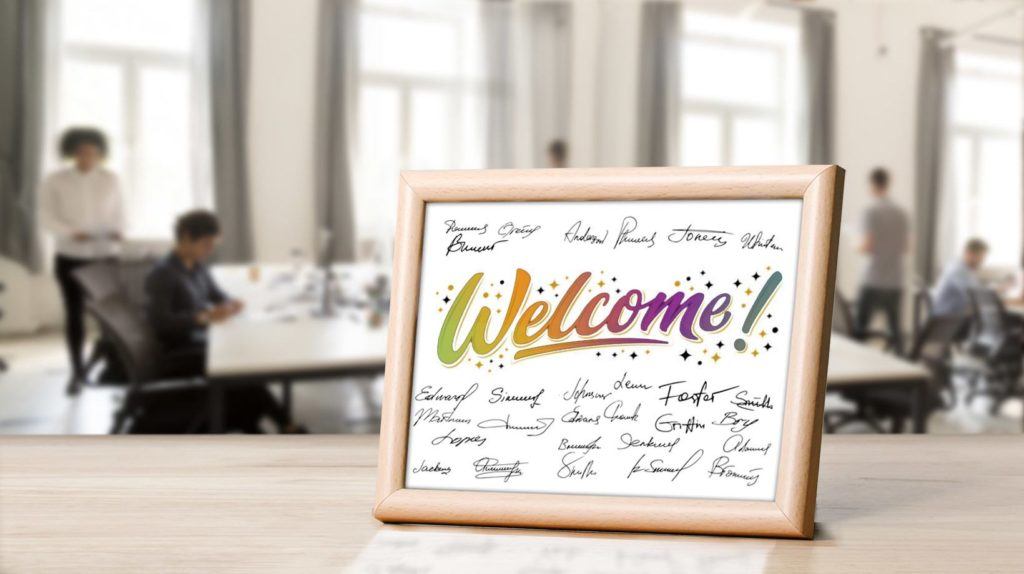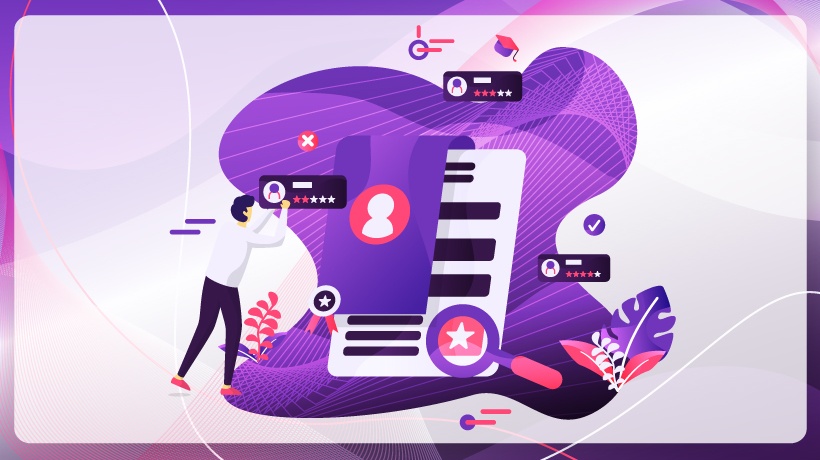Improve Your Employee Onboarding With These Ideas
If you were to name the most common of all training events, it might be new employee orientation. Whether your company is large or small, onboarding new employees to common processes and procedures, orienting them to their benefits packages, and introducing them to your company’s mission, goals, and history are all very important and necessary steps. Unfortunately, if you were to ask those same employees to name the dullest of all training experiences, they’ll likely tell you it’s employee onboarding. Endless PowerPoint slides detailing information they have little or no context for, information that could have been delivered as a one-page job aid instead of a 30-minute presentation—new employee orientation is no one’s idea of a wonderful way to spend the first day (or days!) at a new job.
Rethinking The New Employee Onboarding Experience
What if, instead, their first day was energizing and stimulating? What if team members actually experienced that day as an unexpected bonus and an actual benefit? What if it made them think “Woah! That was unexpected! I think this is going to be my best job ever!”
A tall order for an employee onboarding program? Perhaps. But let’s open our minds to creating the best employee onboarding experiences possible. And I’ve got some ideas to help you get started.
Bringing Empathy Into Your Employee Onboarding Program
Employing empathy is the most important thing you can do to make any training relevant and interesting to your learners. In this context, empathy means deeply understanding your audience. We want to understand what our orienteers feel: What is important to them in their early days at the company? What are they worried about? Excited about? Confused about? What obstacles do they perceive? What do they believe to be true about their role in the organization?
And how are you going to find out all this information? Well, that’s the easy part: All you have to do is ask.
Asking questions to deeply understand your audience is different from interviewing Subject Matter Experts though. In this case, you want to give the audience the opportunity to tell you what they think is important, rather than ask them what you want to know.
Feedback from people who have recently been through the employee onboarding process can be gold. Consider asking them to respond to this simple, three-question survey at the end of their first day:
- What was your most pressing concern coming into training today?
- Are you still worried?
- What else would you like us to know?
It won’t take them long at all, and it can provide invaluable information for improving the next iteration of your new employee orientation program.
However, a note of caution: If your post-orientation surveys are used as a way for your stakeholders and/or management to evaluate you (as the facilitator and/or designer), beware. That creates pressure on you to create an evaluation instrument that is about you. If that’s the case, you will probably find that your learners aren’t saying anything useful; it will be too positive! If this happens, then split the survey into what you need for your management and what you need for your ongoing improvement.
Using Experiential Learning To Create The Best Employee Onboarding Experiences
There is another thing you can do to improve your employee onboarding, but it will require a change in your mental model for training, or, in other words, how you view training. Instead of creating onboarding training, create an onboarding experience. The hows and whys of creating learning experiences is a broad subject, but there are a couple of takeaways I want to share for you to consider.
First, put the emphasis on doing rather than watching. Challenge yourself to come up with an active experience for every topic in your orientation program for new employees. For example, if you want to include diversity and inclusion as a topic, think about these questions:
- How can the learner actually experience what it means to be a member of a diverse group?
- What is the experience of inclusion?
- How can you bring that to life?
Second, following the actual experience, include time and space for personal reflection. Reflection is considered to be essential for experiential learning to be effective, and many times we quickly follow activities with a small group debrief. Before you do this, however, take time to let your learners reflect privately on the experience.
Beyond making the onboarding as experiential as possible, you can also make it a better experience, in a more general sense, by literally putting yourself in your learner's shoes and seeing how the employee onboarding experience “feels.” Answer these questions to yourself:
- What is the room like?
- Are the chairs miserable to sit in?
- Are there opportunities to move around?
- Are the refreshments thoughtful?
In other words, if you weren’t paying them, would anyone ever want to do this employee onboarding program? If they wouldn’t, what can you do to make the program better? Consider how you can add little touches that send the quiet message that this experience is all about them and that your company cares about them.
Rituals And Artifacts As New Employee Orientation Best Practices
An aspect of the employee onboarding journey that you may not have considered is the use of rituals and artifacts.
Using rituals within training experiences in an intentional way is kind of a new idea. When you read the word, you might be thinking something rather grand like a wedding or perhaps the crowning of royalty. Yes, those are rituals, and what we are suggesting shares things in common with those.
Rituals are especially helpful in marking the transition from one state to another. The employee onboarding transition—in which a person who works somewhere else now becomes a person who is part of your team—is going to happen whether you mark its happening or not. But by adding ritual, you are saying, “Look, everyone! Something important is happening at this moment, and we all are noticing!” Adding importance to the moment makes it stickier and may contribute to retention.
What could a ritual look like? It could be something as simple as staging a graduation or welcoming for your onboarding employees. Imagine representatives from the new employee’s department “receiving” her as she symbolically walks from the onboarding training room to join them—such a simple act but one that will surely stick in the memories of all involved.
Artifacts are simply a physical reminder of the employee onboarding event, a way to concretely say, “We gathered and did this, together, at this time and in this place.” It might be something that the new employee takes with them, such as a card with the mission statement of the organization printed on it or something that the onboarding cohorts created together and remains behind to be seen every time the onboarders return to its location. Think of a mural or a graffiti wall.
The Best Creative New Employee Orientation Programs Begin With Listening And Exploring New Ways To Engage Learners
With a little focus on the learner and willingness to do things differently, you can create an employee onboarding experience that your new team members think of as a hiring bonus and not a chore to be endured. Where’s one place you can start to reinvent your approach to employee onboarding?








